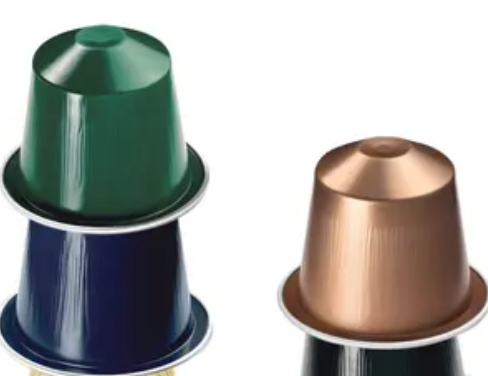In 1975, a young engineer named Eric Favre took a trip to Rome that would change the history of coffee.
1975年,一位名叫埃里克·法夫尔的工程师去罗马旅行,此行将改变咖啡的历史。
Favre had recently started working at Nestle’s headquarters in Vevey, Switzerland,
法弗雷最近开始在雀巢位于瑞士沃维的总部工作,
and one of his first projects was to develop a machine
他的第一个项目就是开发一台机器,
that would combine the convenience of domestic coffee with the quality of an Italian espresso bar,
这台机器可以将家庭咖啡的便捷和咖啡店里意大利浓缩咖啡的质量结合起来。
where customers paid more for a product made by an expert using large, expensive equipment.
在咖啡店,顾客会为能手使用大型,昂贵的设备制成的产品花更多的钱。
Successful products can look inevitable in hindsight, but the gap in the market wasn’t obvious.
事后来看,成功产品是必然会出现的,但是当时市场的缺口不是那么明显。
At the time, two kinds of coffee were drunk at home.
当时,人们在家中喝两种咖啡。
There was roast and ground, which was tasty but laborious, whether prepared in a cafetiere, stove-top or filter machine.
一种是烤的和磨碎的咖啡,味道很好,但很费力,不管是用咖啡机、炉灶还是过滤器来做。
Or there was soluble instant coffee, which was quick and easy but had an unsubtle flavour.
一种是速溶咖啡,既快速又简单,但味道不太精细。
To be tempting at a higher price, Favre’s new machine had to offer high-quality coffee with the speed and ease of instant.
为了以更高的价格吸引顾客,法夫尔的机器必须得以速溶咖啡的速度和简便的方式制作高质量的咖啡。
Wandering through the centre of Rome, Favre noticed a long queue snaking from a coffee bar near the Pantheon.
在罗马市中心漫步时,法夫尔注意到万神殿附近的一家咖啡馆里排着蜿蜒长队。
Plenty of other cafes nearby used the same machines. What was it about this place, Favre wondered, that made it so special?
附近的许多咖啡馆都使用同样的机器。法夫尔好奇,到底是什么让这个地方如此特别?
Inside, the barista explained that other operators pumped the piston just once before releasing the coffee.
在里面,咖啡师解释说,在释放咖啡之前,其他操作人员只对活塞进行一次泵送。
But at Sant’Eustachio Il Caffe, the baristas pumped repeatedly.

This meant they forced more water and air into the ground beans, which meant greater oxidisation,
这意味着他们将更多的水和空气注入到咖啡豆中,这意味着更多的氧化作用,
which drew out more flavour from the beans and produced more of a crema – the layer of foam formed on top of a good espresso.
这将使咖啡豆释放更多的风味,产生更多的克丽玛——在一杯好的意式咖啡上面形成的一层泡沫。
In the history of at-home premium coffee, this is perhaps the closest anyone has ever come to a eureka moment.
在优质家庭咖啡的历史中,这也许是任何人中最接近顿悟时刻的时候。
Favre returned to Switzerland and, along with a small team, set about designing a machine that could replicate this procedure.
法夫尔回到瑞士后,和一个小团队着手设计一台可以复制这一过程的机器。
The idea of a portioned coffee system had been around since the 50s, but no one had seriously pursued it.
分割咖啡系统的想法早在50年代就有了,但是没有人认真地去追求它。
Favre’s aim was to build a world in which espresso was available at home.
法夫尔的目标是建立一个可以在家里喝到浓咖啡的世界。
Customers would own a machine, into which they would place a sealed pod filled with ground coffee.
顾客将拥有一台机器,他们可以将一个密封的装满咖啡粉的咖啡荚放入其中。
The pod would keep the coffee fresh. (Although roast coffee can stay fresh for weeks, ground coffee loses its freshness after about half an hour.)
这个咖啡荚可以使咖啡保持新鲜。(虽然烘烤咖啡可以保鲜几周,但磨碎的咖啡在半小时后就失去了新鲜度。)
The capsule design would also ensure greater aeration, mimicking the repeat oxidisations at the Sant’Eustachio.
胶囊的设计也将确保更大的充气,模仿在鹿角咖啡店的重复氧化。
After the pod was inserted, a needle-like spout would pierce one end. Hot water would be pumped through this needle at high pressure.
当咖啡荚被插入后,一个针状的喷口会刺穿它的一端。热水将以高压从针头中泵出。
As the capsule became pressurised with water, the foil would be forced against a spiked plate, bursting it inwards, and out through the spout would run an espresso.
当胶囊被水加压时,金属箔会被压在一个带尖刺的盘子上,将其向内爆开,然后一杯浓缩咖啡就会从喷口流出。


